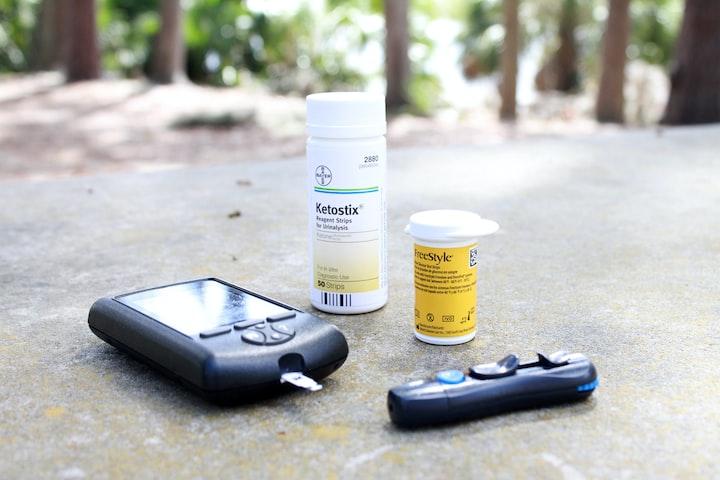When diabetes mellitus occurs, it can cause a number of complications, one of which is damage to the feet. The nerves may be damaged, which can lead to numbness in the feet. This can make it difficult to detect cuts, blisters, or sores. The circulation may also be impaired, which can delay healing and increase the risk for infection. As a result, people with diabetes mellitus need to take special care of their feet.
There are several signs that diabetic feet may have problems. One is changes in skin color. The skin may become red, swollen, or dry and cracked. Calluses or ulcers (sores) may form on the foot. Nails may change color or shape and start to grow abnormally slowly or not at all. Toenails may become thickened and yellowed due to a fungal infection called onychomycosis. Foot pain is another sign that something is wrong as this is often one of the first symptoms of nerve damage (neuropathy).
If you have diabetes mellitus and notice any changes in your feet, it is important to see a doctor right away so that any problems can be treated early on before they become more serious.
Changes in skin color
Changes in skin color can be one of the first signs of diabetic feet. The skin may become pale, yellow, or red. There may also be changes in texture, such as dryness, cracking, or scaling. The skin may also feel warm to the touch. If you have any of these changes, see your doctor right away.
Changes in skin temperature
Signs that the skin on your feet has become warmer than usual include:
-Redness or flushed skin -Increased sweating -Warm to the touch If you notice any of these signs, contact your healthcare provider immediately. Left untreated, warm skin can progress to ulcers or infections.
Swelling in the foot or ankle
If you have diabetes, you may notice that your shoes or socks sometimes feel tighter than usual. This could be a sign that your feet are starting to swell. If you have diabetes and you notice any swelling in your feet or ankles, it’s important to contact your doctor right away. Swelling could be a sign of a serious complication called diabetic neuropathy (nerve damage). Neuropathy can cause loss of feeling in the feet, which means you might not feel a cut or sore on your foot until it becomes infected. Infections of the foot are common in people with diabetes and can lead to serious problems if left untreated.
Pain in the legs
Diabetic neuropathy is a serious complication of diabetes. It can lead to other problems, such as infections and ulcers in the feet. Treatment for diabetic neuropathy includes taking medications to relieve pain and prevent further damage to the nerves.
Open sores on the feet that are slow to heal or are draining
If you have diabetes, you may experience problems with your feet due to poor blood circulation and nerve damage. This can cause extremely dry skin on your feet, which can lead to open sores. If these sores are not cared for properly, they can become infected and lead to serious complications.
Signs that you may have an open sore on your foot include:
– Redness or inflammation around the sore
– Discharge from the sore
– Pain or tenderness in the area of the sore If you notice any of these signs, it is important to see a doctor right away so that the sore can be properly treated. If left untreated, an infected foot sore can lead to cellulitis (skin infection), bone infection, or gangrene (tissue death). Gangrene is a potentially life-threatening condition that requires immediate medical attention.
Ingrown toenails or toenails infected with fungus
Symptoms of an ingrown toenail include pain, redness, swelling, and warmth around the to e. The to e may also be tender to the touch. An ingrown toenail can occur when the edge of the toenail grows into the skin. This can happen if you trim your toenails too short or wear shoes that are too tight.
If an ingrown toenail is not treated, it can lead to an infection. Symptoms of an infected ingrown toenail include pus or drainage from the to e, a foul odor coming from the to e, and fever. If you have any of these symptoms, you should see a doctor right away for treatment.
Treatment for an ingrown toenail usually involves soaking your foot in warm water several times a day and wearing loose-fitting shoes. You may also need antibiotics if you have an infection. In some cases, surgery may be necessary in order to remove part of the nail or nail bed.
Prevention of ingrown nails can be achieved by cutting nails straight across and not rounding off corners; wearing well-fitting shoes; avoiding trauma (such as stubbing)to toes and treating any underlying conditions such as athlete’s foot.”
Corns or calluses
Corns and calluses are common foot problems that can be painful and difficult to get rid of. Corns are small, hard bumps that form when the skin rubs against something, such as a shoe. Calluses are larger, thicker areas of dead skin that form when the skin is exposed to friction or pressure. Both corn.
Dry cracks in the skin, especially around the heel
Diabetic feet can often be a source of great pain and discomfort. The condition is most commonly caused by high blood sugar levels, which can damage the nerves and cause circulation problems. Symptoms of diabetic feet include dry cracks in the skin, especially around the heel. The cracks can become infected, which can lead to serious complications. Treatment for diabetic feet includes keeping the skin clean and dry, as well as using lotions or creams to keep the skin soft. In severe cases, surgery may be necessary to remove dead tissue or correct deformities.
